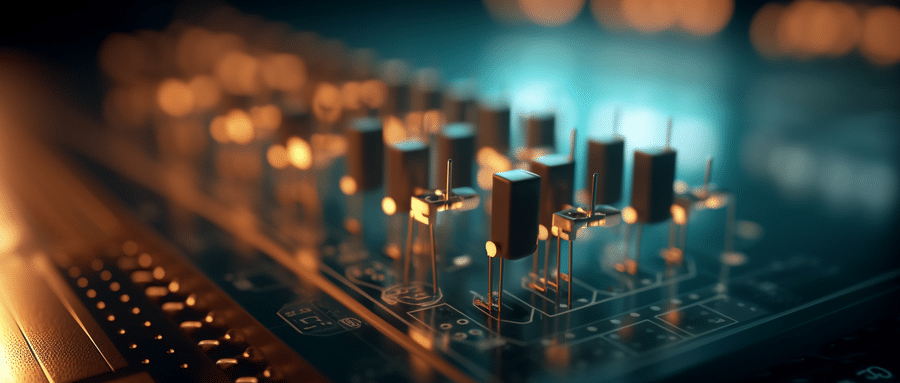FR-4 PCB: The Versatile and Widely Used Substrate Material
FR-4 PCB Substrates Are Highly Versatile and Commonly Employed Substrates
FR-4 (Flame Retardant-4) is one of the most frequently utilized substrate materials for printed circuit boards (PCBs). Due to its diverse properties and reliability, FR-4 PCBs are widely adopted across industries. Here we explore their composition, benefits, considerations, as well as their wide array of applications across diverse sectors.
Composition and Properties of FR-4 PCBs:
FR-4 PCBs are comprised of woven fiber glass material impregnated with epoxy resin for mechanical strength and electrical insulation, respectively. Furthermore, flame retardant additives are added to increase fireproofness – earning it its moniker.
Key Benefits of FR-4 PCBs:
1. Electrical Insulation:
A primary goal of any PCB substrate is electrical insulation. FR-4 offers excellent properties to achieve this objective, providing proper isolation between conductive traces and layers on the PCB for reduced risk of short circuiting while increasing reliability of operation of its circuits.
2. Mechanical Strength:
FR-4 PCBs are known for their mechanical strength and rigidity, making them suitable for many electronic applications. Their woven fiberglass reinforcement offers stability during production, assembly, and use; helping the board withstand mechanical stress from manufacturing, assembly and use – contributing significantly to reliability and longevity.
3. Flame Retardancy:
FR-4 contains flame retardant additives which render it fire-retardant and self-extinguishing, providing additional safety in electronic devices while decreasing risk of electrical fires. Because of this property, it makes an ideal material for applications where fire safety is of primary concern.
4. Cost-Effectiveness:
FR-4 is a cost-efficient choice for PCB manufacturing. It strikes an optimal balance between performance, reliability and affordability; making it suitable for many different applications. Furthermore, its mass production capabilities further contribute to its cost efficiency.
Applications of FR-4 PCBs:
1. Consumer Electronics:
FR-4 PCBs find widespread application in consumer electronics products such as smartphones, tablets, laptops, televisions and household appliances. Their excellent electrical insulation properties, mechanical strength properties and cost effectiveness make FR-4 ideal for high volume consumer electronic production lines.
2. Industrial Equipment:
Industries such as control systems, automation equipment and instrumentation all depend on FR-4 PCBs for reliability and performance under difficult conditions. Their combination of mechanical strength and electrical insulation properties makes FR-4 ideal for applications requiring long-term durability and stability.
3. Automotive Electronics:
Automotive electronics utilize FR-4 PCBs extensively, from engine control units (ECUs) and infotainment systems to advanced driver assistance systems (ADAS). Their flame retardant properties combined with superior mechanical strength and insulation properties makes FR-4 an excellent choice for applications where reliability and safety are critical, such as ECUs or advanced driver assist systems (ADAS).
4. Aerospace and Defense:
FR-4 PCBs are widely utilized in aerospace and defense applications due to their reliability, mechanical strength and electrical insulation properties. They find use in critical systems requiring resistance against harsh environmental conditions like high temperatures and vibration.

FR-4 PCBs remain the go-to material of choice for PCB manufacturing due to their versatile properties – including excellent electrical insulation, mechanical strength, flame retardancy and cost effectiveness. They find applications across industries including consumer electronics, industrial equipment, automotive and aerospace applications where reliability performance safety are key considerations. Their wide adoption speaks to their track record as meeting the demands of modern electronic systems.
FAQ:
- What is FR4 in PCB?
FR4, short for Flame Retardant 4, is the grade designation for the epoxy fiberglass cloth used as the base material in most types of PCBs. It’s chosen for its high temperature tolerance, rigidity, and excellent electrical insulating properties. - What properties make FR4 suitable for PCBs?
Aside from its flame retardancy, FR4 is chosen for its strength, rigidity, and resistance to water and chemicals, as well as its good electrical insulation. It’s also relatively easy to work with during PCB manufacturing process. - How is FR4 manufactured?
FR4 is a composite material made from woven fiberglass cloth, which is impregnated with an epoxy resin binder. It’s formed under high temperature and pressure conditions into rigid sheets of varying thicknesses. - Are there different grades of FR4?
Yes, different grades of FR4 exist. These variations mainly revolve around the fabric weave of the fiberglass cloth, the type of epoxy used, and the filling additives mixed with the epoxy. - Can FR4 handle high-frequency applications?
While FR4 is suitable for a wide range of applications, it isn’t ideal for very high-frequency RF circuits due to its relatively high dielectric constant and dissipation factor. For such applications, specialized high-frequency laminate materials may be more suitable. - What is the temperature rating of FR4 material?
FR4 can typically handle temperatures up to 130°C. It’s capable of enduring the high temperatures of soldering processes used in PCB assembly. - What thickness options are available for FR4 boards?
FR4 boards come in various thickness options including but not limited to, 0.2mm, 0.4mm, 0.8mm, 1.0mm, 1.2mm, 1.6mm, 2.0mm, 2.4mm, and so on. - Are FR4 boards suitable for all types of PCBs?
While FR4 boards are widely used and suitable for many types of PCBs, there are exceptions. For instance, high-frequency applications or extreme thermal environments may require specialized materials. - What are the limitations of using FR4 for PCBs?
Despite its advantages, FR4 isn’t ideal for high-frequency designs due to its high dielectric constant and loss factor. It’s also not recommended for high-temperature applications exceeding its rating. - What alternatives to FR4 exist for PCB manufacturing?
There are various alternatives including polyimide, PTFE (Teflon), Rogers, and Alumina based boards, etc. The selection depends on specific application requirements such as thermal stability, frequency of operation, rigidity, and cost-effectiveness.























